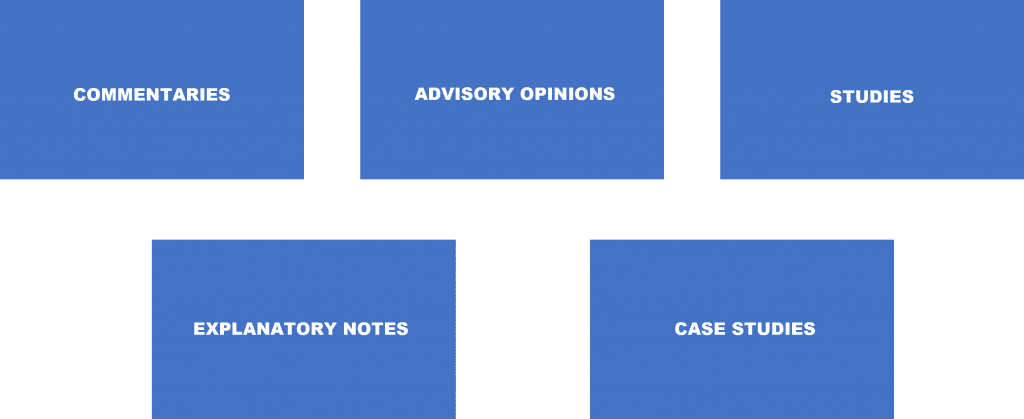Articles of the Agreement 1-24:
PART I: Rules of Customs Valuation
PART I: Rules of Customs Valuation Articles 1-17:
Article 1-Transaction Value Method
The basis of Customs Value of imported goods shall be the “Transaction Value”. It is the price actually paid or payable for the goods when sold for export to the country of importation adjusted in accordance to Article 8.
Article 2-Transaction value of identical goods
Where the customs value cannot be determined under Article 1 (Transaction value method), the Customs value shall be the transaction value of the identical goods sold for export to the country of importation and exported at or about the same time as goods being valued. These goods must have been valued and captured in Customs database. The goods should be the same in all respects including physical characteristics, quality and reputation. Minor differences in appearance shall not preclude goods otherwise conforming to the definition from being regarded as identical. The minor differences in appearance would include: color, size, label and pattern.
Article 3-Transaction value of similar goods
Where the customs value cannot be determined under Article 1 and 2 the Customs value shall be the transaction value of similar goods sold for export to the country of importation and exported at or about the same time as goods being valued.
Similar goods are goods which, although not alike in all respect have like characteristics and component materials which enable them to perform the same functions and to be commercially interchangeable.
The quality of the goods, their reputation and the existence of a trade mark are among the factors to be considered in determining whether goods are similar and note that the goods must be produced in the same country as the goods being valued.
Article 4- Application of Article 5 & 6
Provides for the rights of the importer to alter the sequence of application of articles 5 and 6.
Article 5- Deductive Value Method
It provides for determination of the Customs Value basing on the unit price at which the imported goods or identical or similar goods are sold in the greatest aggregate quantity, at or about the time of importation of goods being valued, to persons who are not related to the person from whom they buy such goods.
Article 6- Computed Value Method
Under this article, the Customs value is determined on the basis of the costs of the production of the goods being valued, plus an amount for profit and general expenses usually reflected in sales from the country of exportation to the country of importation of goods of the same class or kind.
Article 7- Fallback Method
Provides for determination of the Customs value; using reasonable means consistent with principles and general provisions of the Agreement and on the basis of data available in the country of importation.
Article 8- Adjustments to the transaction Value
This article provides for consideration of costs which have been incurred by the buyer but have not been included in the price actually paid or payable. They include compulsory and optional Adjustment
Article 9-Currency conversion
If conversion of currency is necessary for the determination of customs value, the rate of exchange to be used shall be that duly published by the competent authorities of the country of importation concerned.
Article 10- Confidentiality
All information which is provided on a confidential basis shall be treated as strictly confidential by the authorities concerned and shall not be disclosed without specific permission of the person issued except to the extent that it may be required to be disclosed in the context of judicial proceedings.
Article 11-Importer’s right to appeal without penalty
The legislation of each member shall provide for the right of appeal without penalty within the customs administration or independent body up to the judicial authority.
Article 12- Obligation to publish laws
Laws, regulations, judicial decisions and administrative rulings of general application giving effect to this Agreement shall be published in conformity with Article X of GATT 1994 by the country of importation which requires that a member should inform other members of the amendments made.
Article 13- Obligation to provide for a guarantee system
The importer may be allowed to withdraw the goods from customs if it is necessary to delay the final determination of customs value provided that sufficient guarantee is provided.
Article 14- Interpretative Notes to the articles
These notes are set out under annex 1 and the articles of the Agreement are to be read and applied in line with these notes. Annex 1, as well as annex II and III form an integral part of the Agreement.
Article 15-Definitions
This article provides definitions and interpretation of various technical words used in the Agreement.
Article 16- Rights of importers to a written explanation
This article explains the right of the importer to an explanation in writing as to how customs value was determined.
Article 17- Rights of Customs Administrations
This article explains the right of Customs administrations to satisfy themselves regarding the truth or accuracy of any documents or declarations presented to Customs for valuation purposes.
PART II –Administration, Consultations and Dispute Settlement
This part has two Articles.
Articles 18-Institutions
This Article established the basic institutions of the implementation of the Agreement; these are WTO Committee on Customs Valuation and WCO Technical Committee on Customs Valuation.
Article 19-Consultations and Dispute Settlement
This article describes the procedure to be followed for consultations and dispute settlement.
PART III -Special and Differential Treatment
Article 20: Special and Differential Treatment
The Article provides for special provisions available to developing countries. For example, developing countries were given a period of 5 years to delay implementation of provisions of the Agreement.
PART IV–Final Provisions
Article 21- Reservations
This article states that the reservations may not be termed in respect of any of the provisions of the Agreement without the consent of other members.
Article 22- National legislation
This article requires each member to domesticate the Agreement and inform the committee of any changes in its laws. The EAC domesticated the law in 2005 vide section 122 read together with fourth schedule to the East African Community Customs Management Act, 2004.
Article 23- Review
This article provides for Review of implementation and operation of the Agreement by WTO Committee on Customs Valuation annually.
Article 24-Secretariat
This Article mandates WTO and WCO Secretariats to service this Agreement.
Annexes
- The purpose of the annexes is to explain further issues covered by the Articles and mainly the interpretative notes to the Articles, the functions of the Technical Committee on Customs Valuation and the special provisions to the developing countries.
Annex I: Interpretative Notes
- This annex provides the interpretative notes which supplement provisions of Article 1 until Article 15. In particular, they explain in more detail how the valuation methods are to be applied. The notes emphasize the use of the methods in hierarchical order.
Annexes
Annex II–Technical Committee on Customs Valuation (TCCV)
- This annex establishes the Technical Committee on Customs Valuation under the auspices of WCO and describes the role and the responsibility of technical committee with a view to ensuring that at the technical level, there is uniformity in interpretation and application of the Agreement.
- The Agreement has two committees, the Committee on Customs Valuation based in Geneva and the Technical Committee on Customs Valuation based in Brussels. The former is concerned with the trade policy aspects of the Agreement while the latter deals with the Customs aspects of it.
- The main role of the TCCV is the examination of specific technical problems arising in the day to day administration of the Customs Valuation system of Members and to give advisory opinions on appropriate solutions based upon the facts presented.
Annexes
- Advisory opinions: These answer questions raised on the application of the Agreement to a particular set of facts.
- Commentaries: These provide comments on parts of the Agreement and intended to supplement the text with additional guidance.
- Explanatory Notes: These provide the Technical Committee’s views on questions of a general nature arising from the application of the Agreement.
- Case Studies: These are based on a set of facts relating to a particular commercial transaction. They can be used to demonstrate a practical application of the Agreement.
- Studies: These set out the results of detailed studies of questions related to the Agreement.
Annexes
Technical Committee on Customs Valuation- Instruments


Learning Activities
Read legal texts and outline the general principles of the Valuation Agreement
Review the list of instruments of the Customs Valuation Technical Committee available here http://www.wcoomd.org/en/topics/valuation/instruments-and-tools/advisory-opinions.aspx. Identify two scenarios per instrument and prepare a presentation.
Assignment
- The Rules of Customs valuation are contained in Articles 1-7 True or False
- State the rules of Customs valuation in sequential order.
- What are the objectives of the WTO Valuation agreement?
- Discuss the objectives and contents of the Annexes to the WTO Valuation Agreement.
